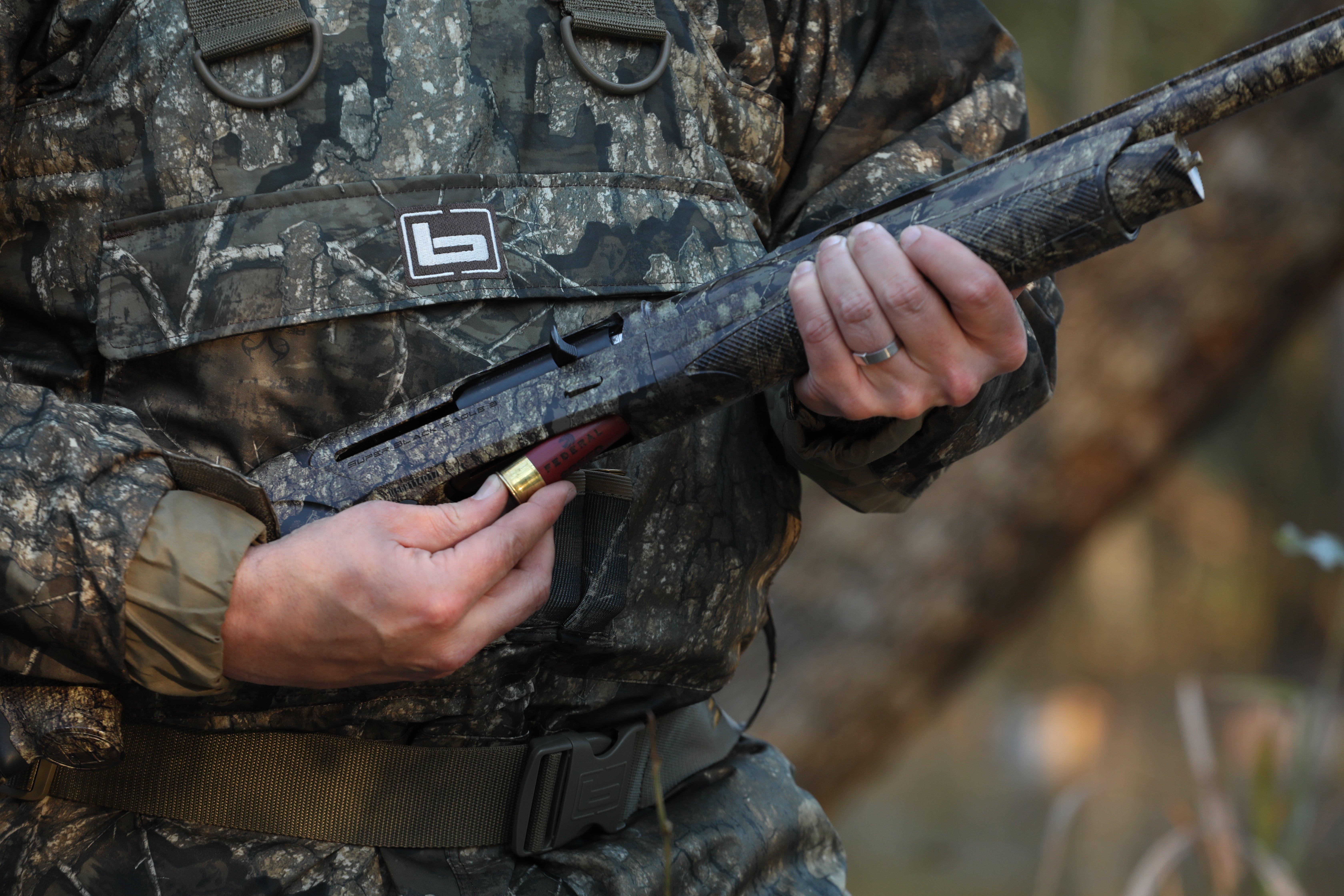Brought to You by Benelli USA
Many folks believe that wing-shooting is wing-shooting, no matter the targets or circumstances. But during duck season, the game gets real. Streaking, twisting targets during low light test anyone's skills. Throw in heavy clothing and awkward gunning positions — think layout blind or unstable boat — and the challenge increases.
This year, avoid wing-shooting pratfalls by getting into a shotgunning groove.
First, find your ideal shotgun — one that feels balanced in your hands and allows smooth, easy shouldering and quick, instinctive target acquisition. You can only do this by trying out guns at the range. More important, make sure your ideal-gun candidate is durable and reliable. (Hint: Benelli's Super Black Eagle III incorporates all these qualities. That's why it's been the No. 1 shotgun choice of hardcore waterfowlers for years.)
When you've found your gun, try these clay-target shots to sharpen your waterfowl game. Caveat: Start with your gun no higher than port arms. You don't get to pre-mount your gun in the marsh. Shouldering your shotgun swiftly and precisely is a major component of good wing-shooting.
Trap, Stations 1 through 5 (16- or 27-Yard Line)
These easy targets replicate the straightaway and quartering-away flush of a duck. Really concentrate on keeping your head down, and follow through aggressively on those hard rights and lefts.
Skeet, Stations 3, 4 and 5, High and Low Birds
These swift crossing targets build wing-shooters. To consistently smash these clays, you must position your feet correctly, swing hard through or ahead of the target and keep that gun moving. If you get lazy, you'll miss.
Springing Teal, Sporting Clays
That description covers a broad range of rising targets, from relatively low and lazy to ridiculously fast and high. Shoot both, but focus on the fast, high risers. As the name implies, those birds really replicate the jet-like ascent of spooked greenwings. Approach these shots as you would a crossing shot: Get aggressive, and keep that gun moving.
Overhead Dove, Sporting Clays
As with springing teal targets, this shot varies from course to course. Some places zip clays low and fast over your head. Others float them higher and slower. Both have merit, as they represent a common overhead duck or goose shot. Match your barrel speed to that of the bird, and swing your gun gracefully through the target. Don't get lulled to sleep by seemingly slow birds.
Descending Incomers, Sporting Clays
These targets take many forms. It's only important that they're coming at you and losing altitude, much like a decoying duck or goose. No, they're not difficult, but some folks miss these surprisingly frequently. Keep your cheek glued to the stock, and remember that you still have to lead those seemingly lazy, motionless birds.
Skeet Station 2, High Bird, or Other Outgoing Targets
It can be tough to gauge the proper lead on going-away targets that zip over your head from behind, so people often shoot behind or underneath them. But it shouldn't be that difficult. Your natural hand-eye coordination will tell you when to slap the trigger. Just keep the gun moving, and shoot the bird sooner than later, as the target doesn't get easier as it gets farther away.
Conclusion
Shoot. Then shoot some more. Become one with your shotgun. Then take those skills to the marsh and reap the rewards this season.
Click here for more Realtree waterfowl hunting content. And check us out on Facebook.







